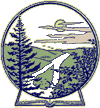By Danial Dunn
Forward
As we ease into spring this year, we are celebrating a milestone. One year ago we launched our very first #WatermanBlog, "Five Signs of Springtime". From day one we have been thrilled by the response from our photographers, writers and readers. Here are some statistics: in our first year we hosted four writers, 22 blogs, 30 photographers, 166 images and 1900+ views. Thank you for a fantastic and educational year! We are kicking off year two with Signs of Springtime 2019 Style! - Teri Franzen
1. Snowdrops, an American Robin and Skunk Cabbage
Galanthus nivalis - Thank you Cheryl Utter for this photograph of Snowdrops. Snowdrop flowers can be found emerging in flower gardens in late winter or early spring even before the last snow melts revealing the little white flowers, or “Drops”. Snowdrops are perennial plants which means that they will live and reproduce on their own for three years or longer unlike annuals that have a growing season of one year and reproduce from the seeds of the previous years plant.

American Robin -Turdus migratorious - Thank you Eric Andersen for this photograph of an American Robin. 10 year old Eric is our youngest blogger ever. Even non nature enthusiasts know one of the first signs of spring is the Robin. But for nature enthusiasts, the Robin is one of the first things to look forward to as a sign of warmer weather ahead. Robins often will flock in the winter months with Cedar Waxwings feeding on fruits and berries. Robins can have up to three broods per year and one of the first song birds to sing before dawn and sing after dusk.

Skunk Cabbage - Symplocarpus foetidus. Thank you Cheryl Utter for this photograph of an emerging Skunk Cabbage. When an early spring walk takes you through the wetlands or around streams, the Skunk Cabbage is one of the very first signs of spring you will find poking its head up through the leaf litter. It has many names such as Swamp Cabbage, Meadow Cabbage and Polecat Weed. If you should accidentally step on the skunk cabbage and bruise the plant, it will give off an odor similar to that of a skunk.

2. Buds and Cherry Blossoms
Thank you Gina Vaughan for the photograph of Buds emerging at Brick Pond. As winter releases its icy grip giving way to the warmer days of spring, tree buds begin to open up. Buds are the flowers or leaves of the next years growth. The tree buds are there all winter and are encased in a tough, bud scale that contains anti freeze to prevent the buds from bursting open freezing conditions.
Thank you Sarah Darling-Jones for the photograph of Apple Blossoms. Apple blossoms are the flower of the apple tree. Apple blossoms form groups or clusters with 4-8 flowers. They start as a pink bud and open into a white, highly aromatic flower attracting bees for pollination.

3. Whitetail Deer
Whitetail Deer - Odocoileus Virginians. Thank you Tiffany Merritt for your photograph of a Whitetail Deer. As winter gives into spring, a new cycle of life begins. Whitetail deer are extremely stressed after surviving winter conditions and a reduced source of food. March is the hardest time for the deer. They have exhausted their fat reserves and conditions in March can be less than conducive to produce adequate green growth as a source of food. Whitetail Deer mate in the fall with a gestation period of 200 - 205 days giving birth to one or two fawns usually near the end of May. The gestation period is governed by the availability of food during winter and early spring. The more abundant the food, the shorter the gestation period.

4. Snow Geese, Montazuma, New York
Snow Geese - Anser caerulescens. Thank you Daniel Dunn and Kelly Sweet for your photographs of Snow Geese. An estimation of 50,000 Snow Geese take flight from the Knox-Marsellus Marsh of the Montezuma Wetland Complex. This is a 228 acre restored wetland, one of many large marshes north of Cayuga Lake, NY that form the complex. It is one of the largest wetland habitats in the Northeast and an important stop over for migrating shore birds in the Atlantic Flyway.


About the Author
Dan Dunn is a professional photographer and graduate of the New York Institute of Photography. Having started his own business, American Reflections Photography in 1995, which specialized in equine photography, weddings, and environmental portraiture of families and children, he realized his heart was into nature photography and now pursues it full time as a photo-naturalist. Dan is currently forming a new photography business called “Daniel Dunn Images” specializing in teaching workshops in waterfalls, long exposure and wildlife photography.
Resource Links
The Spruce, the spruce.com
Wikipedia, en.m.wikipedia.org
National Wildlife Foundation, nwf.org
Wikipedia, en.m.wlkipedia.org All About Birds, Cornell Lab of Ornithology, allaboutbirds.org
4 facts about Tree Buds, jakesnatureblog.com
Backyard Science, Kidsdiscover.com,
Sciencenordic.com Springtime Struggles for White-tailed Deer, DeerandDeerHunting.com Life of the Whitetail Deer Doe in the Spring, the-whitetail-deer.com
Snow Goose Identification, allaboutbirds.com
Snow Goose, Audubon.org
Montezuma National Wildlife Refuge, fwd.gov

